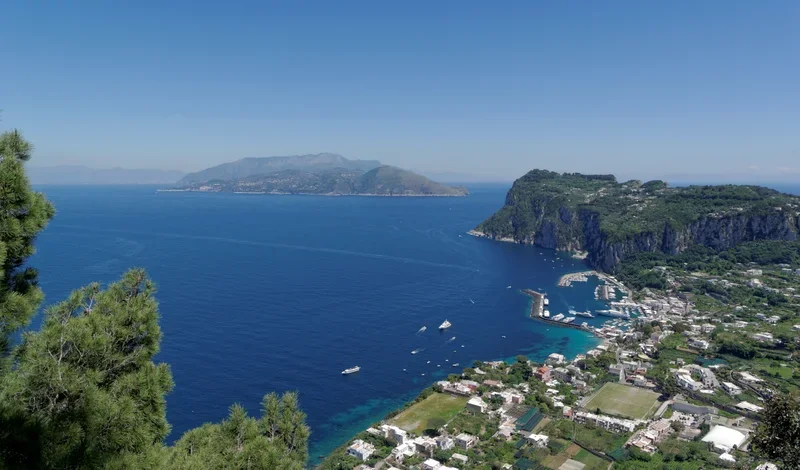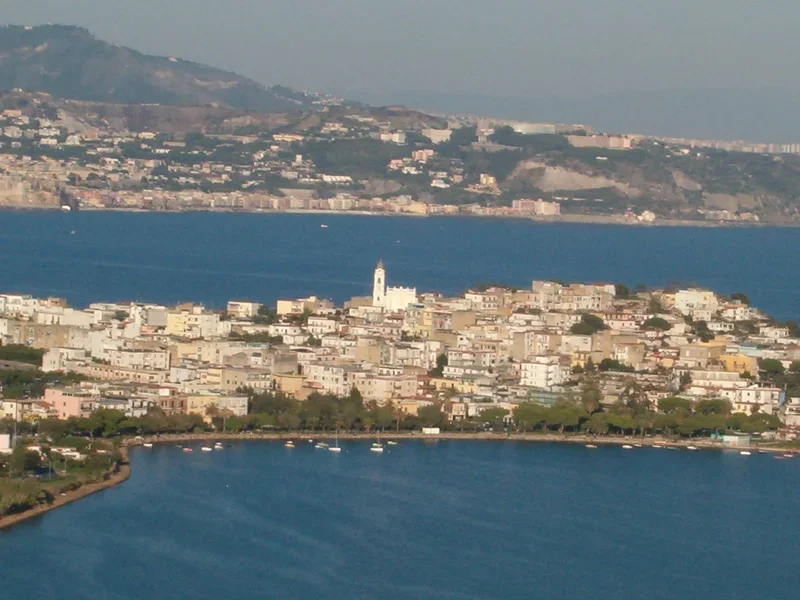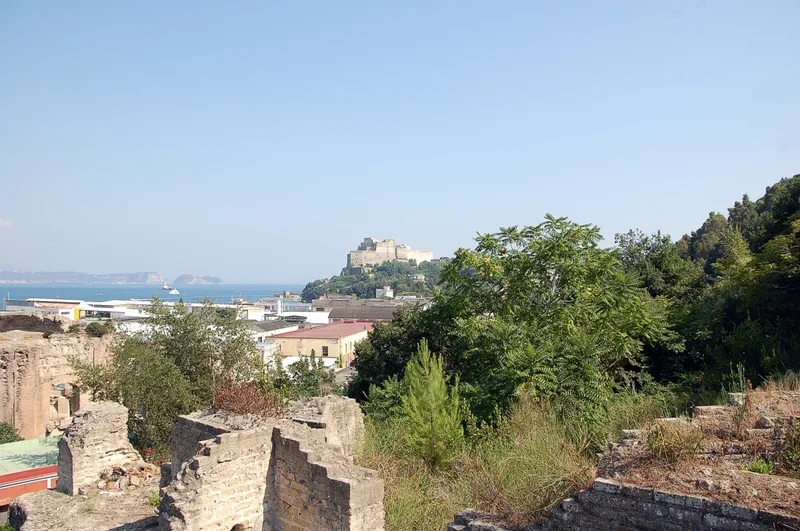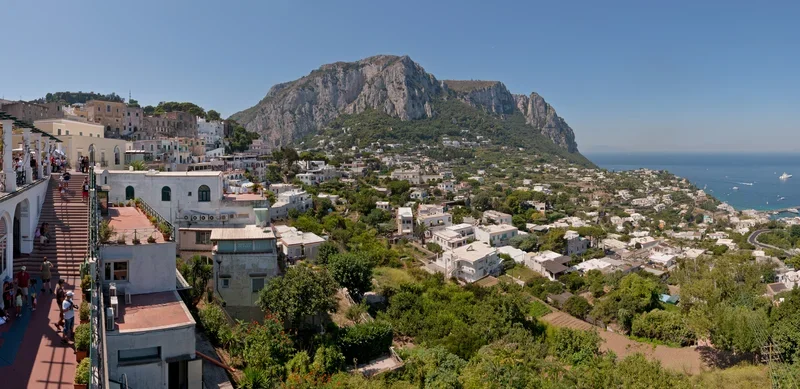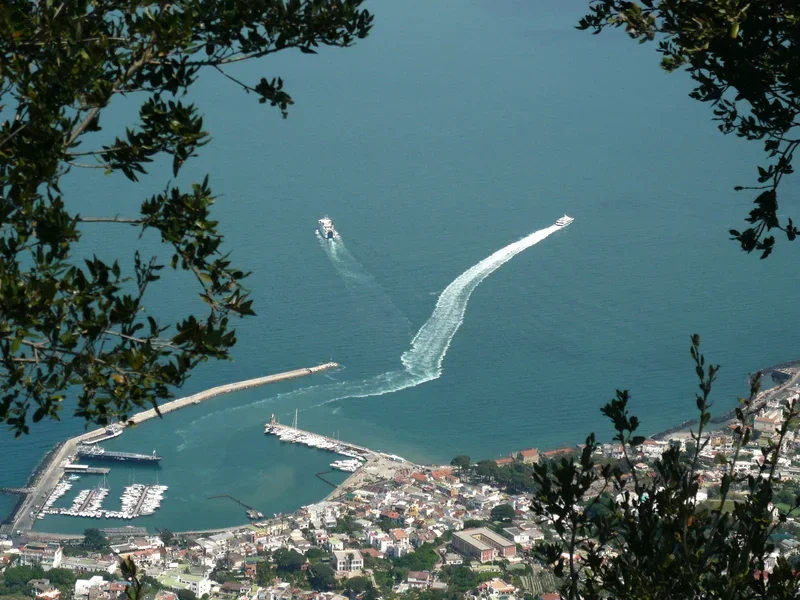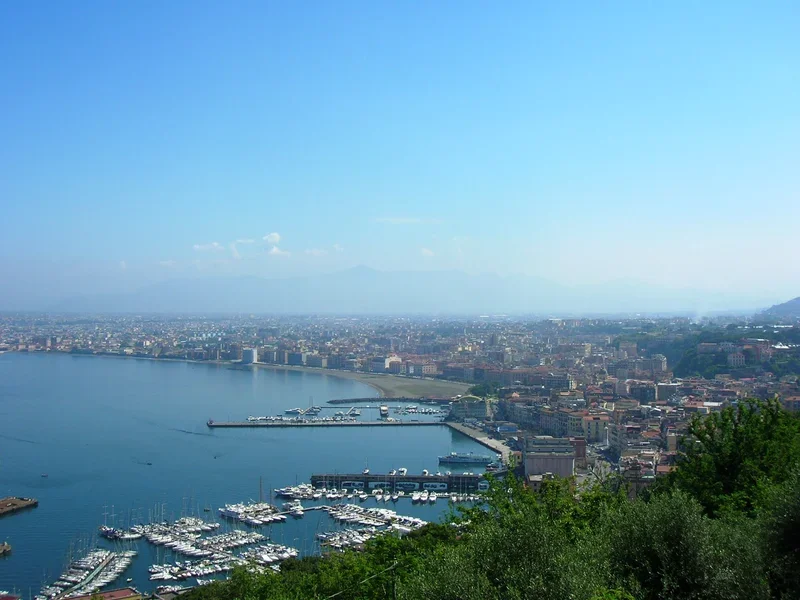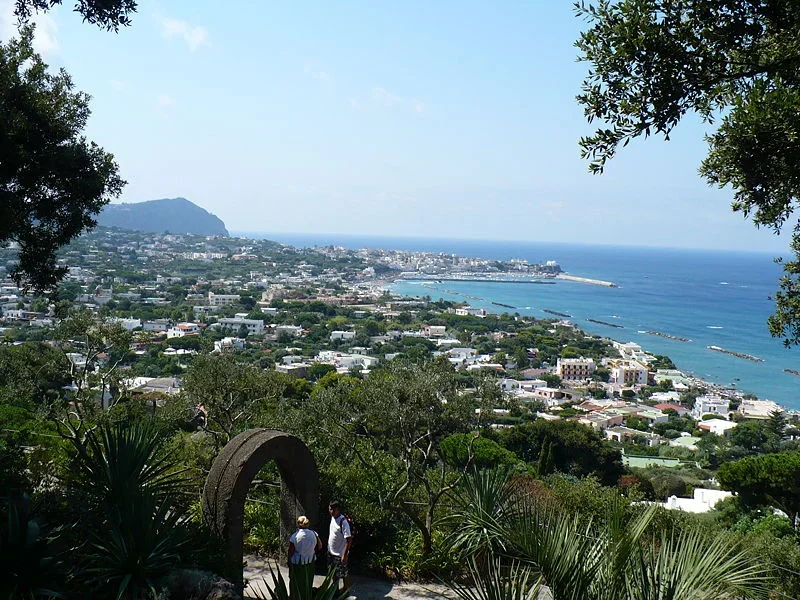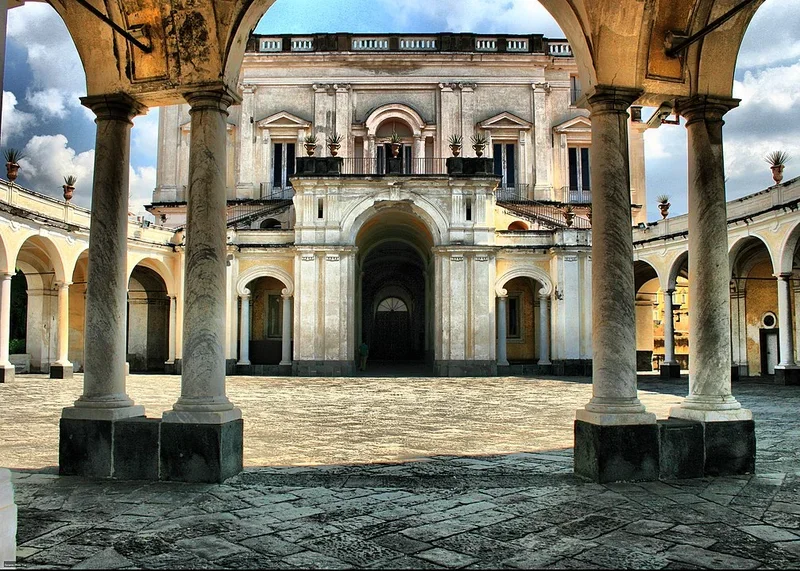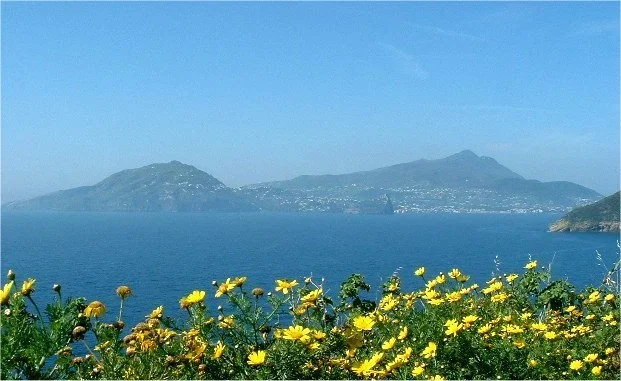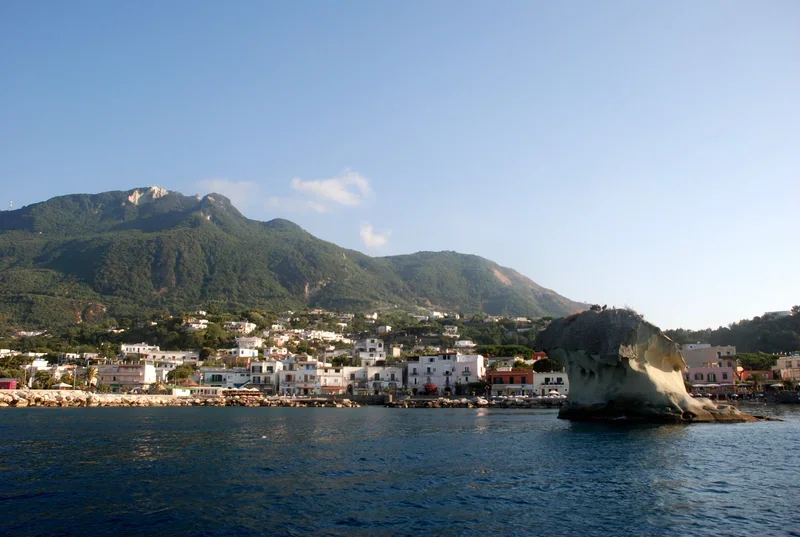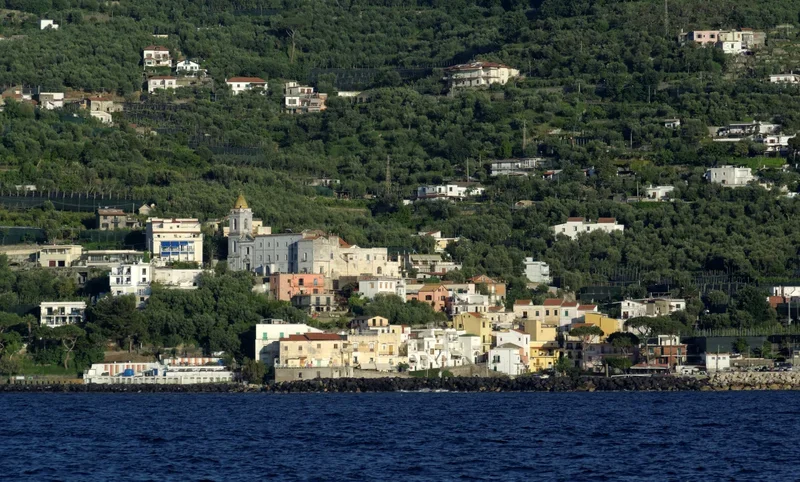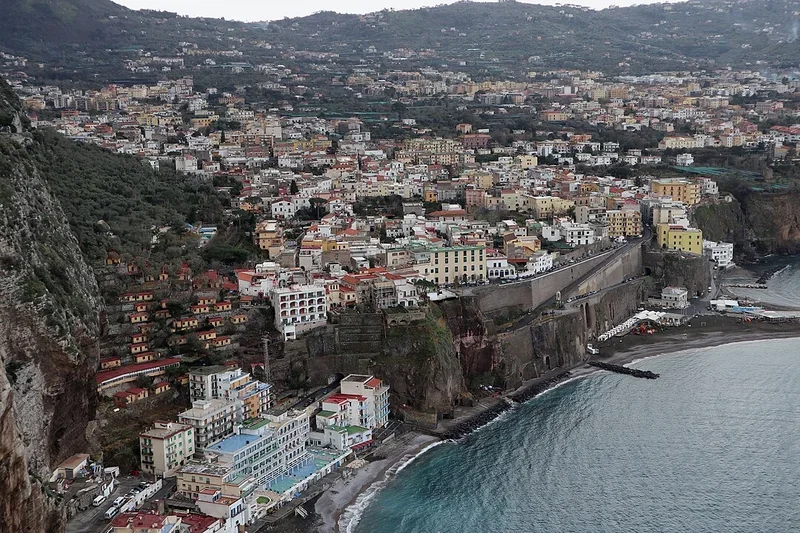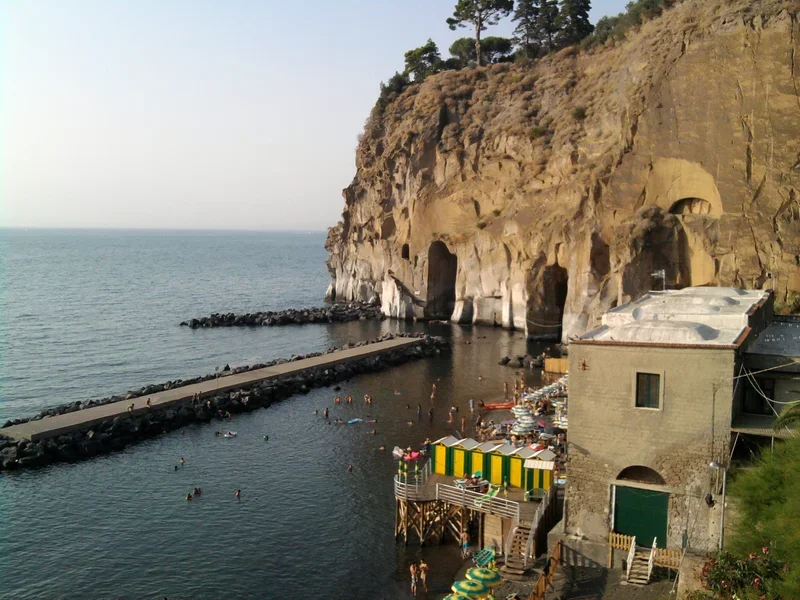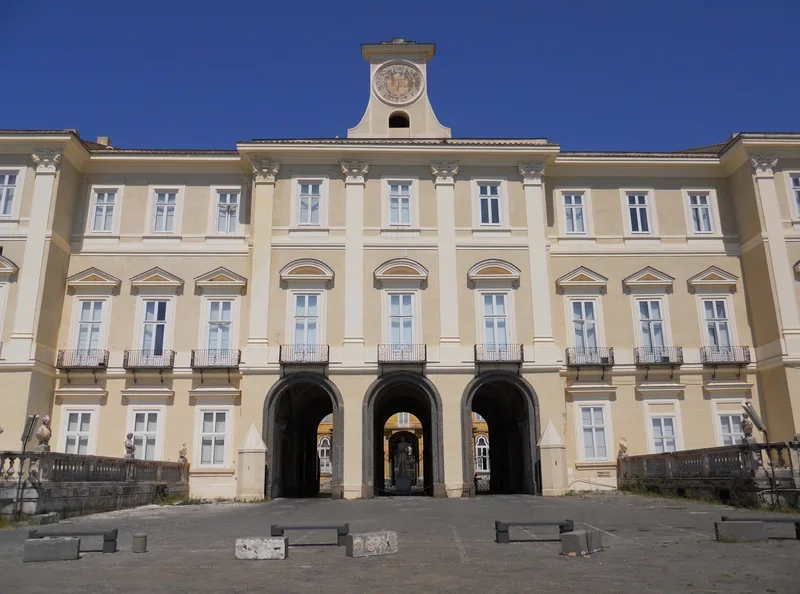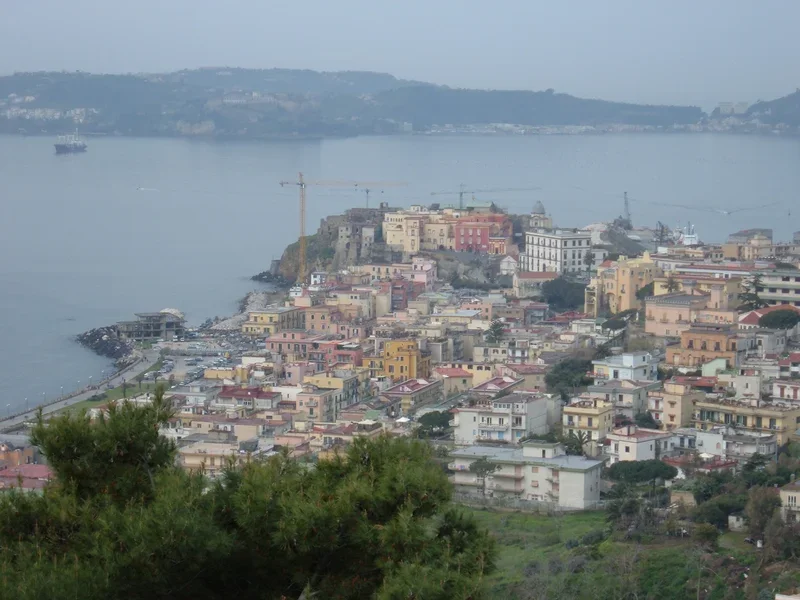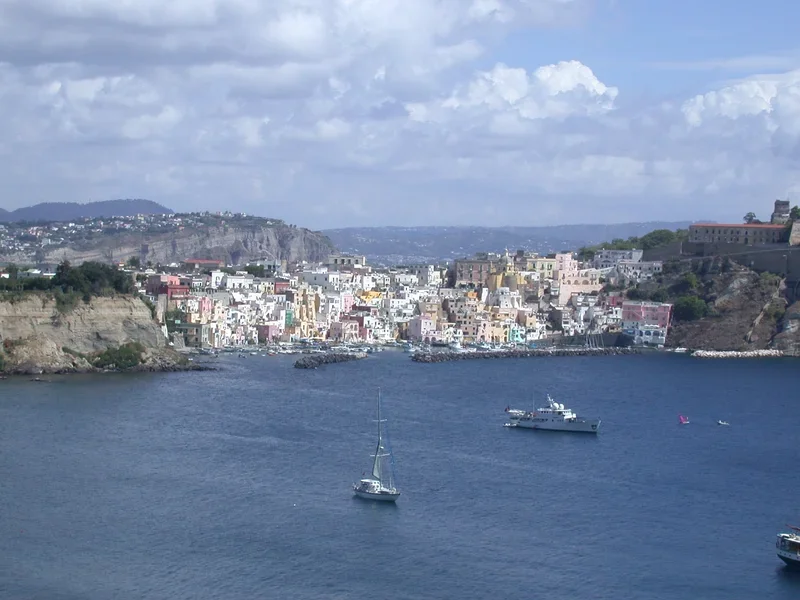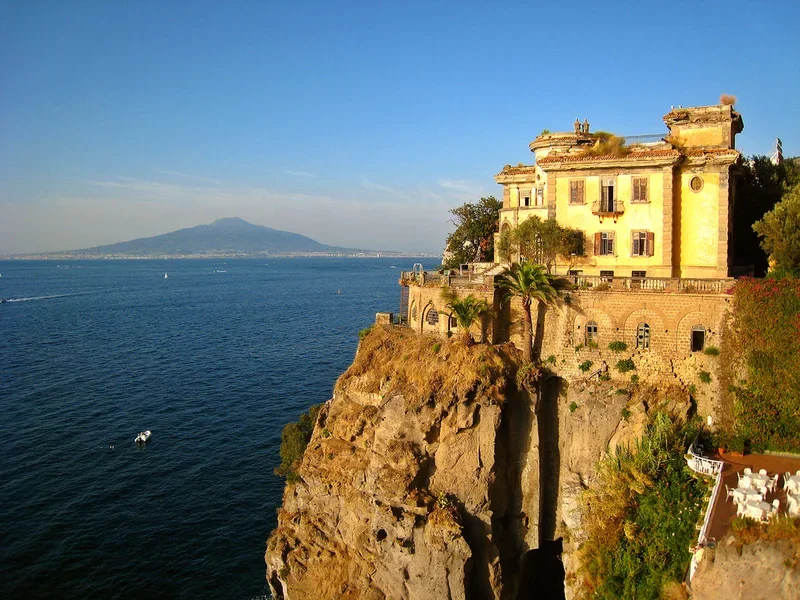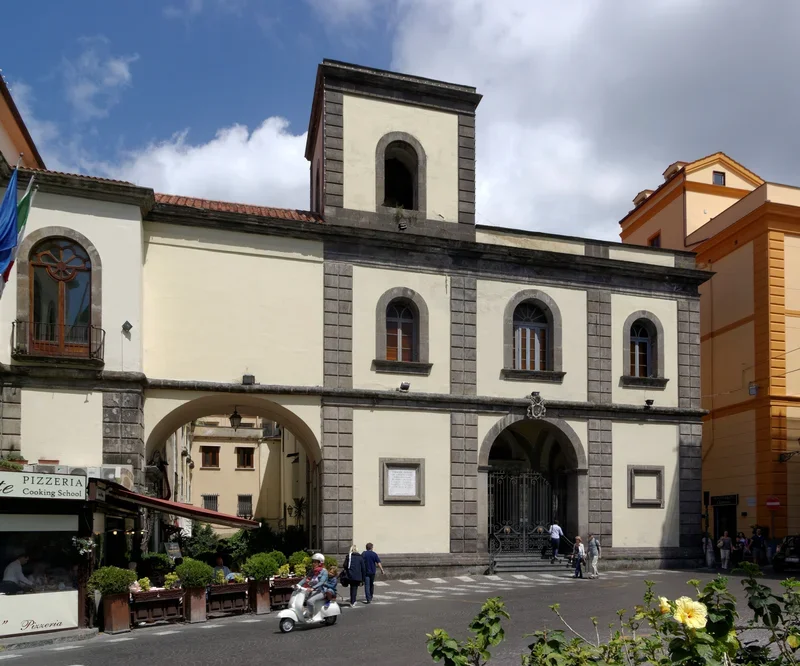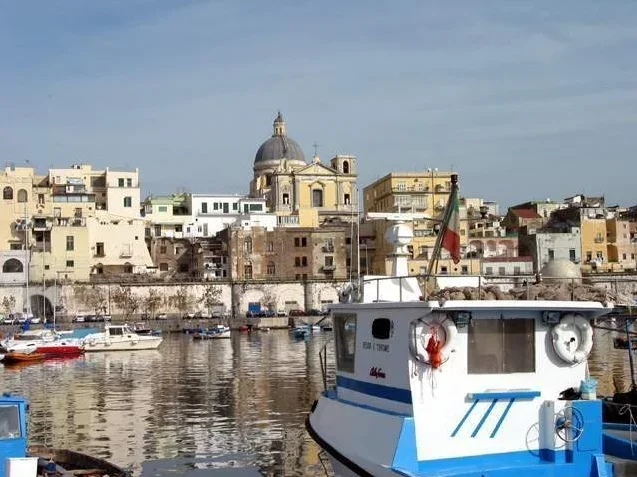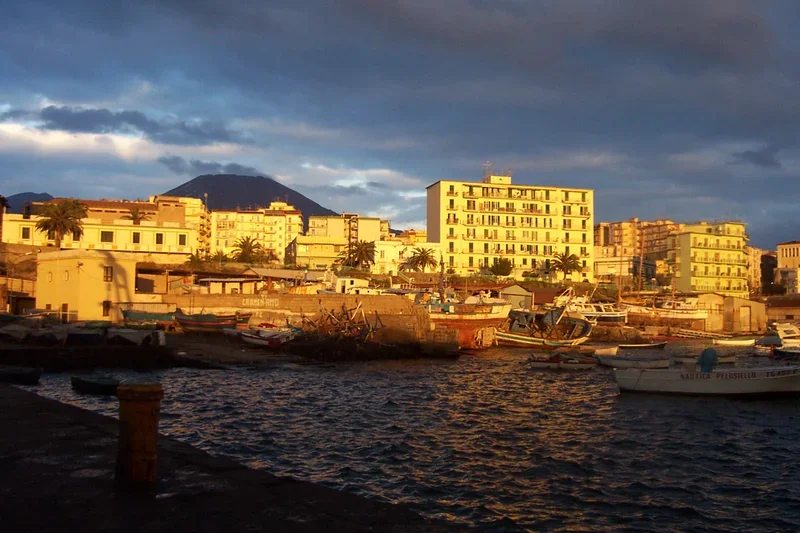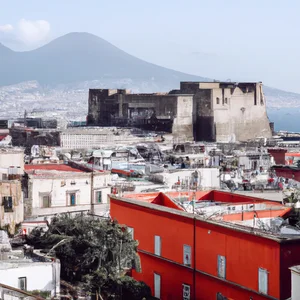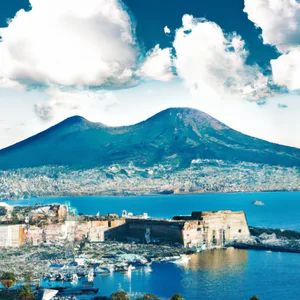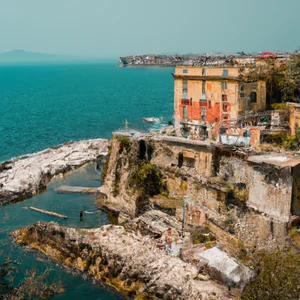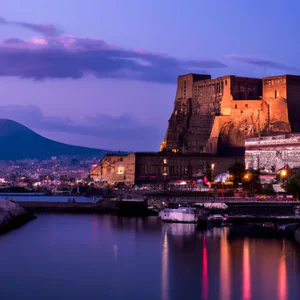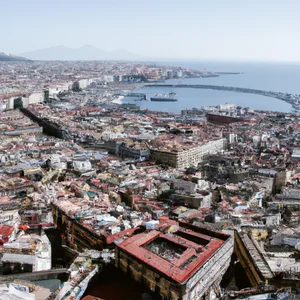Book your experience
Discover the legends and curiosities about the history of the Sorrento Peninsula with a tour in Naples
The Sorrento Peninsula, an enchanting corner of Italy, is an area rich in history and culture, surrounded by a magical atmosphere that fascinates anyone who visits it. This region, with its breathtaking views and centuries-old traditions, is a place where legends intertwine with reality, creating a tapestry of unique stories that deserve to be discovered. A tour to Naples, the city that marks the beginning of an unforgettable journey, represents the perfect opportunity to explore the wonders of the Sorrento Peninsula and its historical curiosities.
In our article, we will delve into the fascinating world of legends and traditions that characterize this area. We will discover the history of the Sirens of Sorrento, mythological figures who have inspired poets and artists for centuries, and the legendary connection between San Francesco and the famous Sorrento lemon, symbol of local gastronomy. We will visit the Villa of Pollio Felice, an ancient Roman site, and immerse ourselves in the myth of Ulysses, who fought against the sirens in these crystalline waters.
The Punta Campanella Castle, with its stories of battles and defenses, and the tradition of the Sorrento tarantella, which tells of the love and passion of the local people, will tell us about a vibrant past. We will discover the mystery of the Valle delle Ferriere, a place of extraordinary beauty, and the fascinating history of the Monastery of San Paolo. Finally, we will explore the legend of the Monaciello, a character who hovers in Sorrento folklore, and the cult of the Madonna del Lauro, who represents the spirituality and devotion of the people. A trip to the Sorrento Peninsula is much more than a simple visit; it is an immersion in a cultural heritage that invites everyone to let themselves be transported by the stories that make this land so special.
The Sirens of Sorrento
History and legend
The Sirens of Sorrento are one of the most fascinating legends linked to the Sorrento coast. According to Greek mythology, the Sirens were half-woman, half-bird creatures, with the ability to attract sailors with their melodious singing and then drag them onto the rocks and cause the shipwreck of their ships.
Legend has it that Ulysses, the Greek hero of the Odyssey, managed to escape the danger of the Sirens by tying himself to the mast of the ship and thus ensuring that he could not be attracted by their song. The Sirens were thus forced to see their power broken by a cunning and courageous man.
Today, the Sirens of Sorrento are represented by evocative sculptures placed along the coast, reminding visitors of the magic and danger of these mythological creatures. The legend of the Sirens is an integral part of the culture and tradition of the area, and contributes to making Sorrento a unique and fascinating place to visit.
The legend of San Francesco and the Sorrento lemon
Origins of the legend
The legend of St. Francis and the Sorrento lemon has its roots in the 13th century, when St. Francis of Assisi visited the coastal town of Sorrento during his pilgrimage to Italy. It is said that during his stay in Sorrento, Saint Francis planted a lemon tree in the courtyard of the convent where he was staying. This lemon tree would later produce extraordinarily large and fragrant fruits, becoming a symbol of the saint's generosity and goodness.
The symbolism of the lemon
The lemon has always been considered a symbol of purity, fertility and prosperity. In popular tradition, lemon is associated with light, freshness and vitality. The Sorrento lemon, in particular, is renowned for its quality and unique aroma, thanks to the mild climate and fertile land of the area. The legend of Saint Francis and the Sorrento lemon has contributed to making this fruit an icon of local culture and a tourist attraction for visitors who want to taste the typical products of the region.
The link with the agricultural tradition
The legend of the Sorrento lemon also has a deep connection with the agricultural tradition of the area. The cultivation of lemons has been one of the main activities of the local economy for centuries, thanks to the quality of the soil and the favorable climate. Today, Sorrento lemons are used for the production of limoncello, a typical liqueur of the region, and for the preparation of traditional dishes of Sorrento cuisine. The legend of San Francesco and the lemon of Sorrento is therefore an integral part of the cultural and gastronomic identity of this splendid tourist location.
The Villa of Pollio Felice
History
The Villa of Pollio Felice is an ancient archaeological site located in Sorrento, in the Italian region of Campania. It is a Roman villa dating back to the 1st century BC, built by the rich Roman politician and general Publius Pollione Felice.
Description
The Villa of Pollio Felice extends over a vast area which includes various residential areas, spas, gardens and a large swimming pool. The structure was richly decorated with mosaics, frescoes and sculptures which testify to the importance and wealth of the owner.
The villa was located in a privileged position, with a breathtaking view of the Gulf of Naples and the island of Capri. This strategic position testifies to the economic and political importance of Pollio Felice, who had commercial interests throughout the region.
Discovery
The Villa of Pollio Felice was discovered during the 19th century during excavation works in the Sorrento area. The excavations have brought to light numerous archaeological finds which are currently preserved in museums in the area, testifying to the richness and beauty of this ancient residence.
The villa is an important tourist site that attracts visitors from all over the world interested in the history and art of ancient Rome. Its beauty and suggestive position make it an unmissable stop for those visiting the wonderful Sorrento coast.
The myth of Ulysses and the sirens
Origins and meaning
The myth of Odysseus and the sirens is one of the most famous tales of Greek mythology. According to legend, Ulysses, the Greek hero protagonist of the Odyssey, finds himself facing the dangerous sirens during his journey to Ithaca. These half-woman, half-bird creatures, with their melodious voice, attracted sailors towards them and then killed and devoured them.
Ulysses, warned by the magician Circe, plugged his sailors' ears with wax and had himself tied to the ship's mast to resist the sirens' charm. Thus he managed to pass through them unscathed and continue his journey home.
The myth of the sirens represents the struggle between reason and desires, between duty and temptation. Ulysses symbolizes willpower and the ability to resist temptation to achieve one's goal.
Mermaids are often interpreted as metaphors of temptations that can lead us away from our destination, but also as symbols of beauty and art that can enchant and seduce.
This myth has inspired numerous artists, poets and writers over the centuries, becoming a universal symbol of the inner struggle and the willpower necessary to overcome difficulties.
The Castle of Punta Campanella
History and description
The Punta Campanella Castle is a fortress located on the extreme tip of the Sorrento peninsula, in the municipality of Massa Lubrense. Its strategic position offers a breathtaking view of the Gulf of Naples and the Gulf of Salerno, and represents an important point of reference for navigation in the Tyrrhenian Sea.
Built in the 13th century by the Normans, the castle has undergone several transformations over the centuries, becoming a defensive fortress against the incursions of Saracen pirates and the Turks. During the Bourbon period, the castle was used as a lookout point to protect the coast from possible enemy invasions.
Currently the Punta Campanella Castle is open to the public and offers the possibility of visiting the ancient walls, the watchtowers and the remains of the gunboats. Inside the castle there is also a small museum which displays archaeological finds discovered in the surrounding area.
The visit to the Punta Campanella Castle is a unique experience to immerse yourself in the history and culture of the Sorrento peninsula, and to enjoy breathtaking views of the sea and surrounding nature.
The tradition of the tarantella Sorrento
Origins and characteristics
The tarantella is a popular dance that has ancient origins and is traditionally danced in many regions of southern Italy, including the splendid Sorrento. The Sorrento tarantella is particularly known for its liveliness and joy, which are reflected both in the dance steps and in the music that accompanies it.
Characterized by frenetic rhythms and energetic movements, the Sorrento tarantella is often performed during parties and celebrations, where couples of dancers move in a synchronized and engaging way. The colorful costumes and the music that accompanies the dance create a festive and engaging atmosphere, which involves spectators and participants of all ages.
The Sorrento tarantella is considered a symbol of the culture and tradition of the region, and is passed down from generation to generation. Thanks to its liveliness and fast-paced rhythm, it has become an icon of Italian popular culture, appreciated not only in Sorrento but throughout the world.
If you visit Sorrento during a festival or traditional event, don't miss the opportunity to attend a Sorrento tarantella performance and let yourself be involved in the charm of this unique and engaging dance.
The mystery of the Valley delle Ferriere
Description
The Valle delle Ferriere is a suggestive natural area located near Amalfi, on the Amalfi Coast. This valley is famous for its richness of flora and fauna, with lush vegetation and a great variety of animal species. Inside it is possible to admire splendid waterfalls, crystalline streams and ancient abandoned mills, which give this place a magical and mysterious atmosphere.
Legends and mysteries
The Valle delle Ferriere is shrouded in numerous legends and mysteries that fascinate visitors and locals. It is said that in ancient times it was inhabited by mystical creatures and ancestral spirits, who still roam the woods and paths of the valley today. Some popular tales speak of encounters with elves and fairies, who protect nature and its wonders.
Another mystery linked to this valley is the presence of ancient iron mines, from which the name "Valle delle Ferriere" derives. It is said that in the past these mines were exploited by the inhabitants of the area to extract the precious mineral, but that one day they were mysteriously abandoned, leaving behind only ruins and legends.
Visit to the Ferriere Valley
For those who wish to explore the Ferriere Valley and discover its secrets, it is possible to follow the numerous hiking trails that cross the area. During the route it will be possible to admire the beauty of uncontaminated nature, listen to the sweet sound of waterfalls and breathe the fresh, pure air of the woods. An unforgettable experience that will make you feel part of a magical and fascinating world.
The history of the Monastery of San Paolo
Origins and foundation
The Monastery of San Paolo is one of the oldest and most evocative places in Sorrento. Its history dates back to the 10th century, when it was founded by Benedictine monks from the nearby Amalfi Coast. The choice of the place is not random, in fact the strategic position on a hill allowed the monks to control the surrounding territory and to defend themselves from the attacks of the Saracen pirates who infested the sea.
Architecture and style
The Monastery of San Paolo is a true jewel of Romanesque architecture, with its stone facade and internal cloister decorated with medieval frescoes. Inside the church you can admire valuable works of sacred art, including paintings and sculptures of great historical and artistic value.
The role of the monastery in the history of Sorrento
Over the centuries, the Monastery of San Paolo has played a fundamental role in the religious and social life of Sorrento. The Benedictine monks took care of the spiritual care of the community, but also of assistance to the poor and the sick. Furthermore, the monastery was an important center of culture and education, where philosophy, theology and sciences were studied.
Furthermore, the Monastery of Saint Paul has hosted illustrious figures from history, including Pope Gregory VII and Saint Francis of Assisi, who stayed there for a short period during his pilgrimage to the Holy Land. The presence of Saint Francis is commemorated by a plaque placed at the entrance to the monastery, which attracts numerous faithful and tourists every year.
In conclusion, the Monastery of San Paolo is a place rich in history, art and spirituality, which certainly deserves a visit during a stay in Sorrento.
The legend of the Monaciello
Origins and meaning
The Monaciello is a legendary figure present in the popular tradition of Campania, particularly in Naples and its surroundings. It is a small elf, described as an old man with a beard and friar's hat, who wanders through the streets of cities and towns, playing pranks and teasing the unfortunates he meets during his nocturnal apparitions.
The legend of Monaciello has ancient roots and has been handed down from generation to generation, becoming an integral part of local folklore. According to tradition, the Monaciello would be a soul in pain, a monk who died without receiving the sacraments or a stillborn child, condemned to wander for eternity in search of revenge or peace.
The Monaciello is considered an ambivalent being, capable of both bringing good luck and bad luck to those who cross his path. To appease his anger or attract his benevolence, propitiatory rituals and votive offerings are performed, such as lighting a candle or leaving food outside the door of the house.
Despite its enigmatic and often joking nature, the Monaciello is a characteristic element of Campania culture and tradition, testifying to the profound spirituality and link with the ancient popular beliefs of the region.

